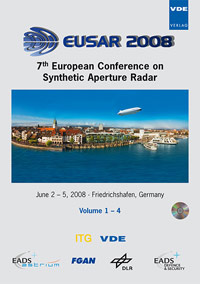Improved multi-channel GMTI via moving target de-chirping and range migration correction
Conference: EUSAR 2008 - 7th European Conference on Synthetic Aperture Radar
06/02/2008 - 06/05/2008 at Friedrichshafen, Germany
Proceedings: EUSAR 2008
Pages: 4Language: englishTyp: PDF
Personal VDE Members are entitled to a 10% discount on this title
Authors:
Gierull, Christoph H.; Ender, Joachim H. G. (FGAN-FHR, Neuenahrer Str. 20, D-53343 Wachtberg, Germany)
Gierull, Christoph H. (Defence R&D Canada - Ottawa, Radar Systems Section, 3701 Carling Avenue, Ottawa, Canada)
Abstract:
This paper introduces a novel approach, named Range-Doppler Retaining (RDR), for the detection and estimation of ground moving targets in multi-channel radar data. Rather than on the final image the technique works in the range-Doppler domain and can be seen as an estimate-while-detect approach. Conventionally, detection of moving objects is done separately on small time segments via short-time Fourier transform. Targets move through several range-Doppler cells over time while the radar passes by. Classically, the detection step must be followed by an arbitration and tracking algorithm to identify individual target trajectories before target parameters are estimated. In contrast, we suggest an adapted and time-delayed de-chirping and range migration correction in order to keep all essential signal characteristics, such as target’s Doppler, range and direction-of arrival (DOA), constant over time. Consequently, the necessity of complicated target tracking can be avoided leading to an improved robustness. Instead, the tracker is replaced by a simple ’hit count’ for each range-Doppler cell, yielding the potential to a significant reduction of false alarms. In addition, owing to the phase de-ramping the coherent target integration time can be enlarged and hence the SCR be increased. The paper introduces the new approach theoretically and corroborates its potentials using experimental airborne data.


